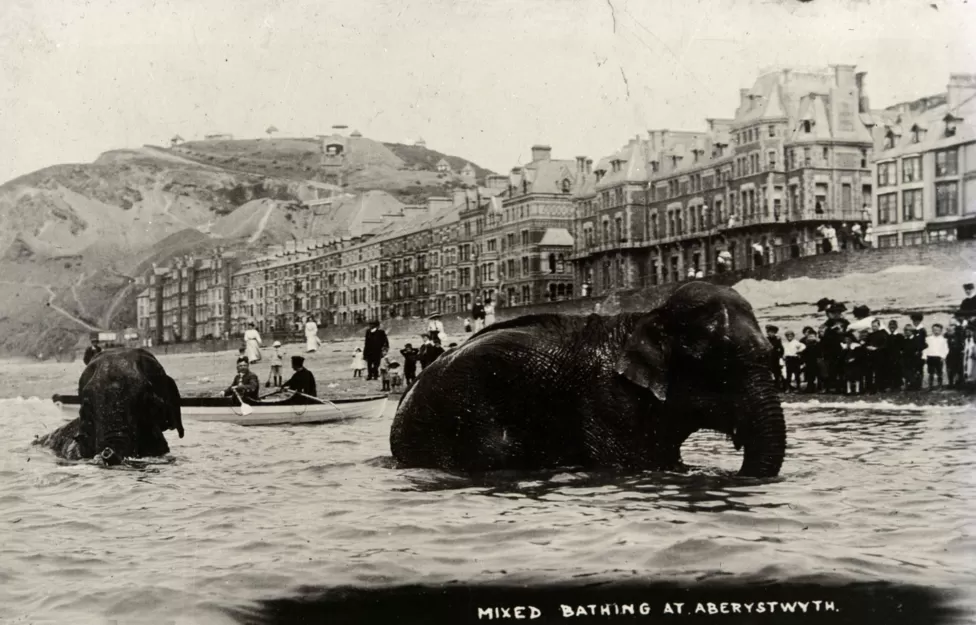As an enthusiastic photographer, Arthur Lewis had a knack for capturing local events, skillfully turning them into coveted postcards sold at his father’s bustling shop in town.
This particular picturesque frame, featuring Aberystwyth’s stately Victorian promenade and the commanding silhouette of Constitution Hill in the backdrop, demanded meticulous arrangement.
“Taken from across the water, Arthur Lewis embarked on a deliberate endeavor,” notes Will, recalling the intricacy behind the scenes. “He must have ventured onto a small boat, noticeable in the background, seeking assistance from the local boatmen to reach the perfect vantage point for his shot.”
Navigating the bobbing boat presented its own challenge. “Imagine balancing on a vessel swaying gently in the water,” muses Will, highlighting the complexity of the task. “During that era, exposure times were notably long. It required skill and precision to capture such a moment. Lewis certainly exhibited commendable prowess.”
Surprisingly, this remarkable photograph didn’t grace the pages of the newspapers.
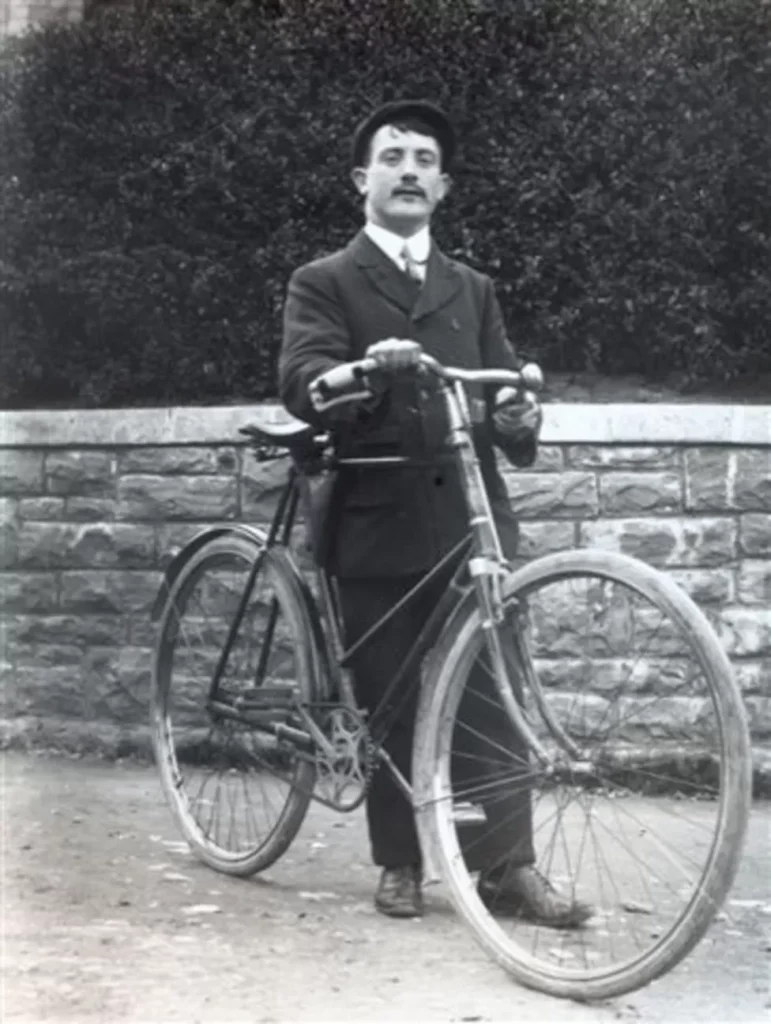
Arthur Lewis, an avid photographer with a keen eye for local scenes, ingeniously transformed his snapshots of town events into coveted postcards, a popular commodity at his father’s shop.
The composition of this particular image, featuring Aberystwyth’s grand Victorian promenade juxtaposed against the majestic backdrop of Constitution Hill, required meticulous planning and effort.
“This shot was taken across the water, indicating Arthur Lewis ventured onto a small boat,” recalls Will, pointing out the faint presence of a skiff in the background. “He likely engaged a local boatman to ferry him out for this captivating perspective.”
Balancing on a bobbing boat posed a formidable challenge. “Imagine the precision required on a vessel swaying in the water,” muses Will. “In that era, exposures were lengthy. It was no mean feat for Lewis to capture this moment. His skill and dedication shine through.”
Surprisingly, despite its captivating essence, this remarkable photograph remained absent from the pages of the newspapers.
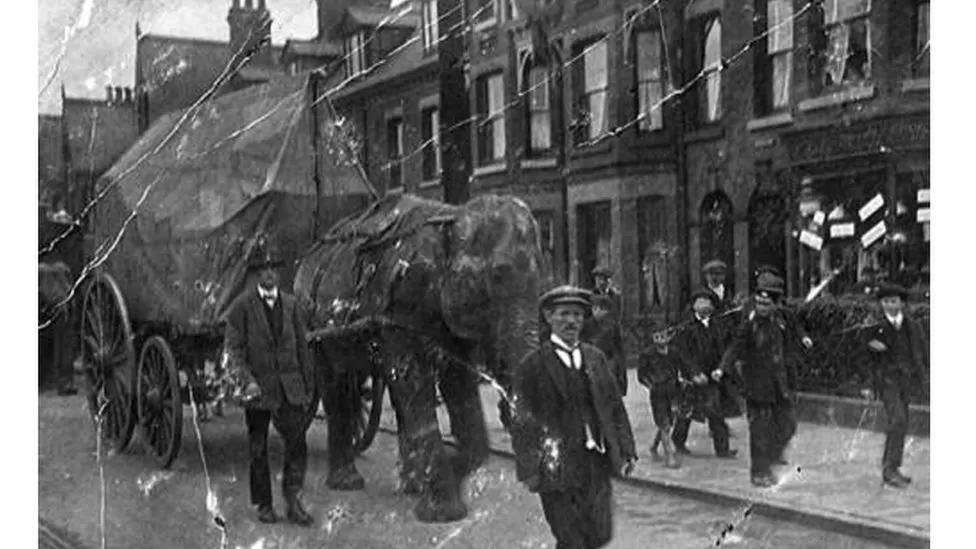
“At that time, featuring photographs in publications was a rarity due to the meticulous and expensive process involved. Crafting a copper plate from a glass negative and printing from it was a time-consuming task, often causing the imagery to miss the timely relevance of the events,” Will elaborated.
Taken a week after King George V’s coronation and just prior to the royal visit to lay the foundation stone for Wales’ national library, Aberystwyth was abuzz with anticipation.
“The entire town was in fervor,” noted Will. “And then, amidst it all, these elephants strolling along the main street.”
Interestingly titled “Mixed Bathing in Aberystwyth,” the inscription on the photograph, penned by the photographer, hints at the societal attitudes prevalent in the early 1900s.
“Before 1901, mixed bathing in Britain was prohibited, forbidding men and women from bathing together,” explained Will. “Even after its repeal, it took considerable time for many places to grasp that shared bathing wasn’t scandalous. It wasn’t until 1908 that mixed bathing received official approval in Aberystwyth. So, the notion of mixed bathing in 1911 was still relatively novel.”
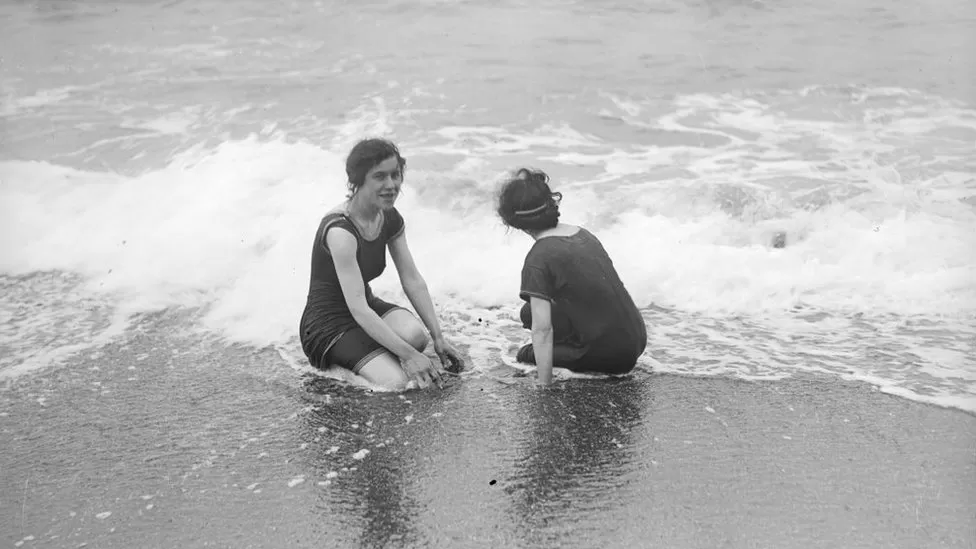
The photograph featuring Salt and Pepper has transcended mere imagery, weaving itself into the very soul of the town, finding its place on countless souvenirs adorning local gift shops.
This mesmerizing snapshot hasn’t just sparked artistic inspiration; it’s birthed ‘Elephants and Hot Chocolate by the Seaside,’ a whimsical novel penned by Adam Leonard Phillips, and spawned an enigmatic urban legend.
Whispers echo through the town, hinting at a fantastical tale—the elephants, post-dip, embarked on a fabled jaunt up the precipitous Constitution Hill looming in the photograph’s background.
“Pure fabrication, a tale spun from thin air,” Will rebutted, dismissing the persistent urban myth.
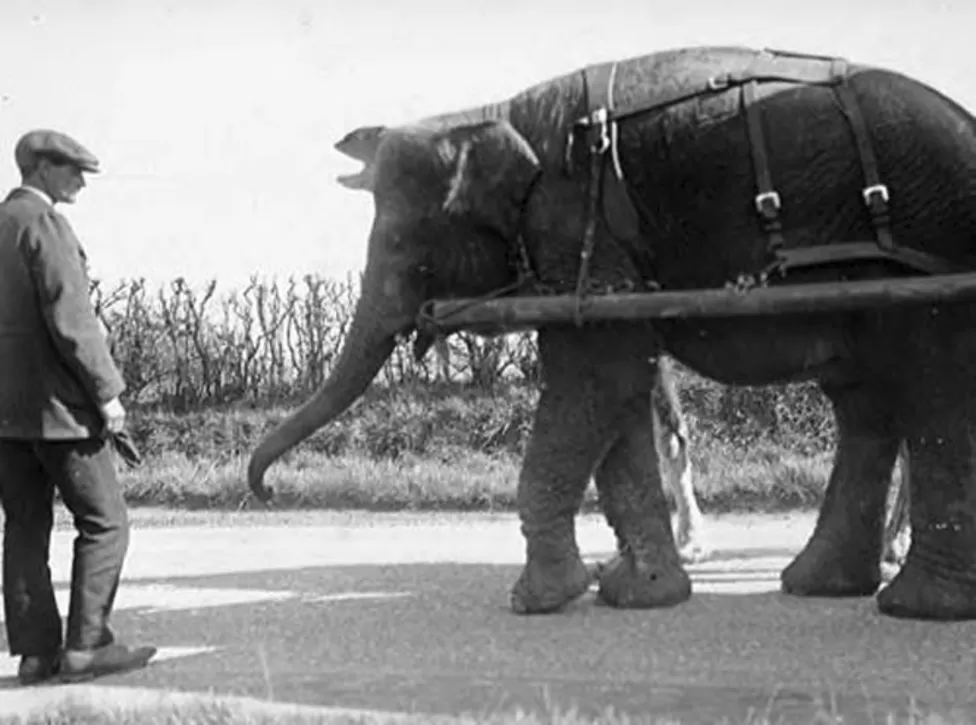
Following Arthur’s passing in 1952, a trove of treasures arrived at the national library—a staggering collection of 1,200 to 1,300 meticulously preserved negatives from Arthur’s illustrious photography career.
In the tapestry of Arthur’s lens, from royal entourages to nature’s tempestuous displays, this photograph holds an immortal place, eternally reproduced and revered.
But what ignites the perennial fascination with this particular image?
“It’s the delightful clash of elements and its innate equilibrium,” mused Will.
“There’s a whisper of nostalgia, yet it’s wrapped in an aura of delightful peculiarity. People are drawn to the unexpected, the slightly offbeat—it’s what captivates them.”
The photograph has woven its enchantment into Will’s heart too.
“I’ve developed a fondness for it,” he confessed.
“Despite its omnipresence, it stands tall as one of Arthur Lewis’ most celebrated masterpieces—a true icon.
